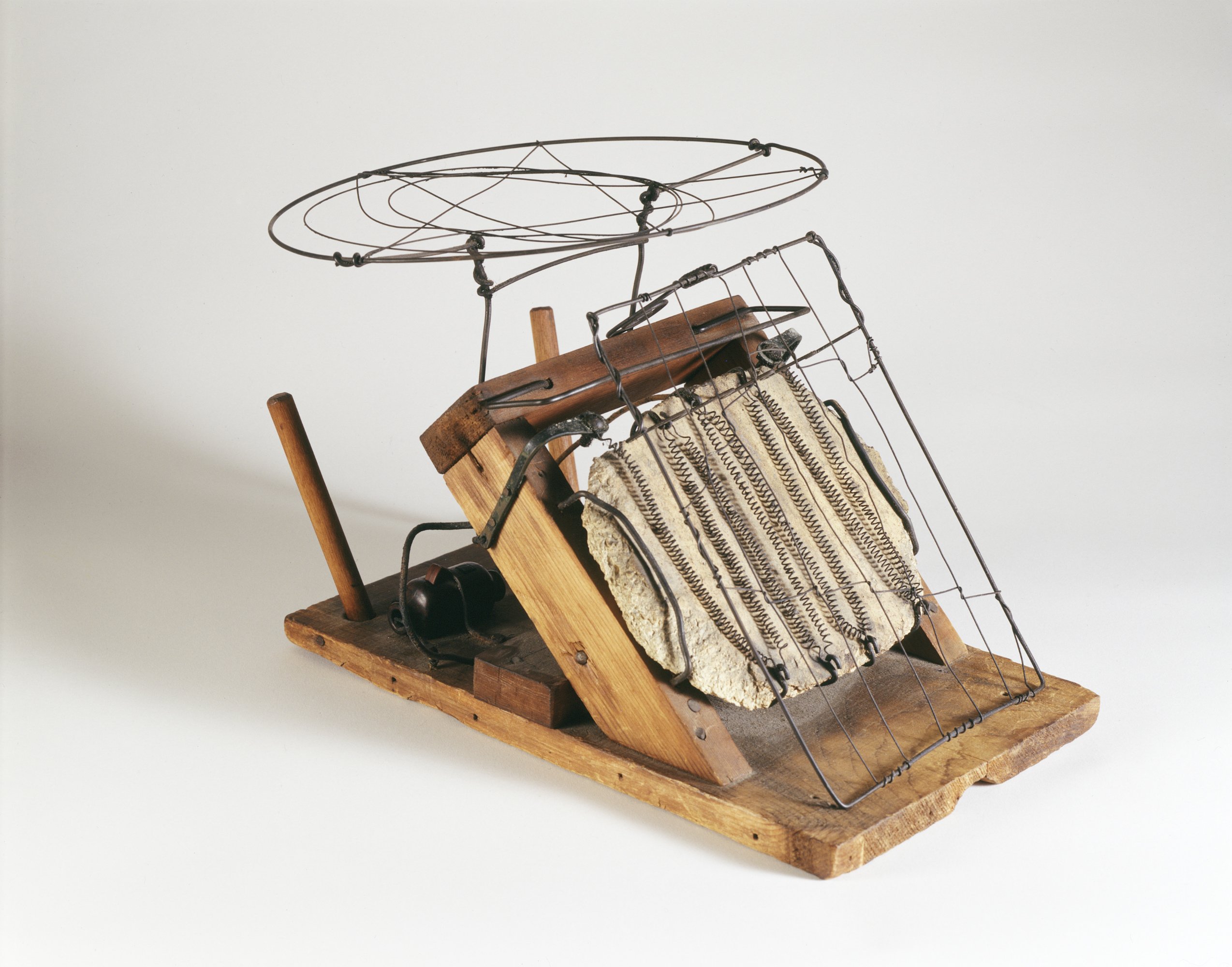
Alexander Calder was a virtuoso of do-it-yourself decor and gadgetry. The extent of his ingenuity is currently being revealed in an exhibition at Hauser & Wirth’s rural Somerset outpost, where a show tells the story of how the American sculptor and his wife transformed a rundown farm in Roxbury, Connecticut, into a whirring hub of creativity.
Calder created his first outdoor kinetic works in Roxbury after the couple moved back to the United States from a transformative sojourn to Paris in 1933. He also made an array of domestic items, including a toilet paper holder shaped like a hand, a milk frother, a dinner bell, ashtrays, chairs, a chess set, and even toasters. Each of these items is touched by the artist’s restless, often whimsical inventiveness, combining a minimal aesthetic with an evident relishing of wit.
Many of these objects are on view for the first time at Hauser & Wirth’s show, running through September 9. Titled “Alexander Calder: From the Stony River to the Sky,” the survey also presents six stabiles and a standing mobile in the gallery’s grounds.
Alexander Calder, Toilet paper holder (around 1952) copyright Calder Foundation, New York / DACS London, 2018.
“It’s really curious,” Alexander Rower, the artist’s grandson and president of the Calder Foundation, told artnet News. “The toasters are amazing constructions. He didn’t have to make a toaster—he could have bought one. But he made five. Each one is unique.”
The toaster included in the Hauser & Wirth show looks unmistakably Calderesque—and potentially hazardous. It is made of wood, stone to retain heat, and ingeniously engineered wire. The wire-and-rock configuration allows the buttered toast to stay warm while the pieces of bread are stacked.
The exhibition includes around 80 objects. Some of the displays evoke Calder’s Roxbury home.
Chairs (around 1935) and Untitled (around 1943), Roxbury house “front room,” 1950
Photograph courtesy of the Calder Foundation, New York. Artist copyright, Calder Foundation, New York / Artists Rights Society (ARS), New York, 2018. Photography by Herbert Matter, copyright the Calder Foundation, New York.
Roxbury’s rolling countryside also inspired Calder to make outdoor sculptures for the first time. Two of his first kinetic works, which were designed to move with the wind, are on show: Red and Yellow Vane and Red, White, Black and Brass. The artist’s foundation is also lending his Surrealist 1938 sculpture Apple Monster, which is made from a fallen branch of an apple tree. (None of the works lent by the foundation are for sale.)
Calder and his wife bought the house and surrounding 18 acres of farmland in the 1930s, when he was making very little money selling his sculpture and jewelry. The building, which dated from the 1760s, was a fixer-upper, so do-it-yourself furniture was necessity.
That suited Calder just fine: He was an unstoppable tinkerer. He even customized a family heirloom. He added wire to the handles of his parents’ tea cups so that they could be used as coffee cups. “They are not Ming dynasty, just some cheapo export ware,” Rower clarified.
The artist continued to make objects for the house even after he started to make real money from his art in the late 1940s. (His sold-out show in Rio de Janeiro in 1948 was the start of his commercial success, Rower said.) The toilet paper holder, meanwhile, dates from around 1952.
Louisa Calder playing accordion for Calder and daughter Sandra, Roxbury, 1938, photograph courtesy of the Calder Foundation, New York, artist copyright the Calder Foundation, New York / Artists Rights Society (ARS), New York, 2018. Photography by Herbert Matter, copyright the Calder Foundation, New York.
Iwan Wirth, the gallery’s co-founder, said in a statement that Alexander Rower’s trip last fall to Hauser & Wirth Somerset inspired the show. “There is a beautiful connection between the works travelling from the Roxbury Farmhouse in rural Connecticut to Durslade Farm,” he said.
“Alexander Calder: From the Stony River to the Sky,” Hauser & Wirth Somerset May 26 – September 9, 2018